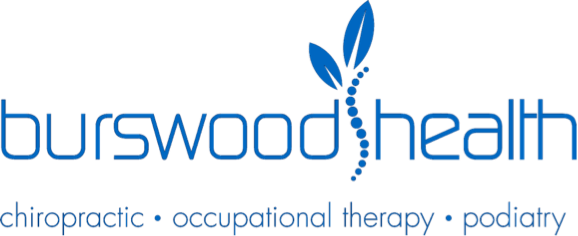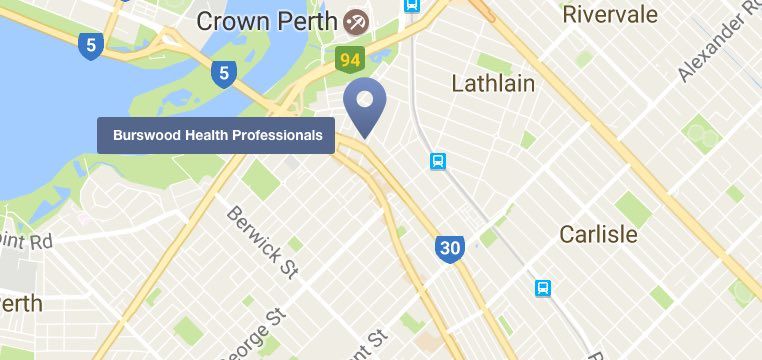Lower Back Pain
Lower back pain can make it impossible for you to engage in the activities of daily living. Your chiropractor can help you with lower back pain, using a natural treatment option instead of medication.
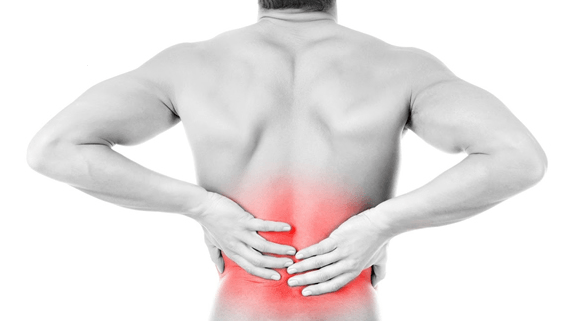
Lower Back Pain: What is it?
It is well recognised that drugs aren't helpful in the management of lower back pain. But spinal manipulation, by your chiropractor, can be effective in easing the pain, so you can get back into the game of life.
At Burswood Health, we focus on finding the actual cause of your lower back pain: injury, overuse, poor posture, etc. But we also look at you as a whole person, taking into account any predisposing factors like your environment or family history.
The first step is always to determine an accurate diagnosis. This involves taking a detailed history, performing a neurological and orthopaedic examination, and sometimes obtaining X-rays, to get a clear picture of the underlying causes. Then we work out a treatment program involving adjustments, manipulation, acupuncture and other therapies. We always bring in an Active Care Program involving exercises you do at home, and teach you about what to do - and what not to do - to strengthen your spine and avoid future problems.
Causes of Lower Back Pain
If you are experiencing low back pain, it can be linked to:
- Sciatica and Disc Problems (herniated or bulging disc)
- Facet joint dysfunction (impingement or subluxation)
- Sacroiliac joint problems (SIJ joint dysfunction)
- Low Back Arthritis
- Muscule or tendon strain
- Pregnancy
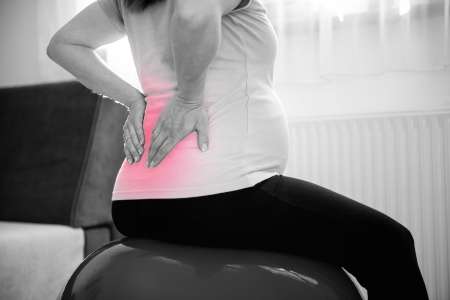
Sciatica
The sciatic nerve runs from your lower back, through your hips and buttocks, down the back of each leg and into your toes. Sciatica refers to pain radiating along the path of this very long nerve. When part of the nerve is compressed, by a herniated disc or bone spur in the spine, you could experience sciatic pain: lower back pain, lower limb pain, and possibly numbness, pins and needless or weakness in one (or both) of your legs.
A bulging disc or herniated disc, means that some of the soft centre of your disc pushes out through a tear or weakness in the outer disc fibres. This bulge can irritate your spinal nerve and that's when you feel low back and possibly sciatic pain. As your body grows older, your discs lose some of their flexibility and shock-absorbing capability. And when you twist and turn awkwardly or lift a heavy object, you're at risk of herniating or damaging a lumbar disc (or two!).
Other Pain You Might Feel
Hip Pain
Do you have ongoing hip pain? Read about what could be causing your hip pain and how we can help.
Facet joint dysfunction
Each pair of vertebrae is separated by a shock-absorbing intervertebral disc. A pair of facet joints allow a 'guiding and gliding' movement of these paired vertebrae, which creates a 'motion segment'. Our spine protects our nervous system (spinal cord), absorbs shock and allows flexible movement of our body as we move through our world.
Each facet joint is richly innervated. When facets pinch or become jammed, the nerves in the facet cartilage become inflammed resulting in pain. The surrounding muscles go into protective - and painful - spasm. Our chiropractors pay particular attention to facet joint alignment and motion and can effectively and gently restore movement to dysfunctional facet joints, thereby relieving pain and stiffness.
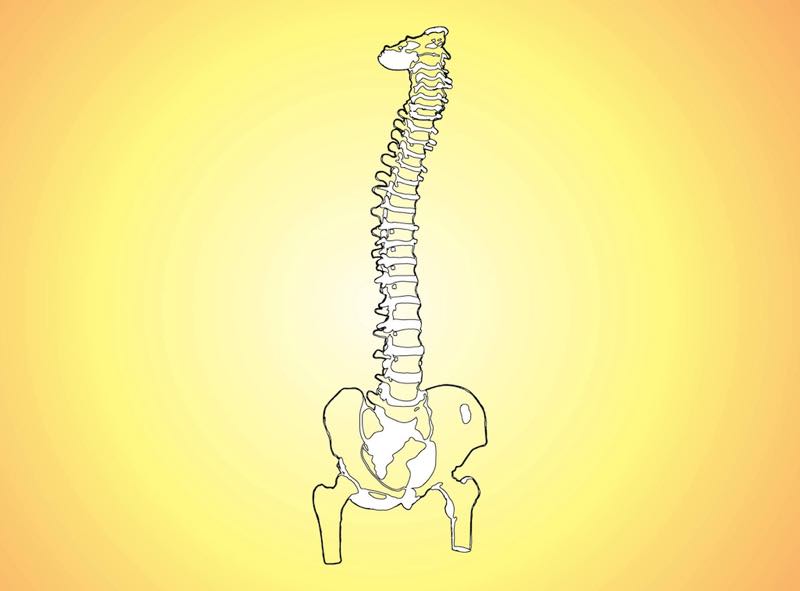
Sacroiliac joint dysfunction
The 24 vertebrae of the adult spine sit perched on top of the sacrum. The last of five lumbar vertebrae articulate with the sacrum - forming the lumbosacral joint at the small of the low back. A lot of tension and strain occurs at the lumbosacral joint as we bend, lift and walk our way through our daily life. The act of walking is a biomechanical marvel. As we take a step forward, all our weight is on one foot. We then plant the forward foot and shift weight to that side as we stride forward again and again.
The act of walking requires a flexible, dynamic pelvic girdle which moves in harmony with our lower limb gait. And all the while our spine moves fluidly above the pelvis - balanced and graceful. Our sacrum (and coccyx) is formed from 9 separate vertebrae which fuse throughout childhood into adulthood.
The sacrum is nestled between the right and left hemipelvis - and the joints on both side of the sacrum are callec the sacroiliac joints. The right and left sacroiliac joints allow flexibility and strength - supporting the spine in an upright posture and permitting us to walk and run on two legs.
Like any joint subjected to the demands of movement and gravity, the sacroiliac joints can become jammed, strained and dysfunctional. Sacroiliac joint dysfunction is a major and common cause of low back pain. And it can co-exist with disc, facet and muscular problems which cause back pain in their own right. Severe or repetitive strain on a joint can also cause it to become too flexible - or hypermobile. And a hypermobile joints needs to be treated in a very different way to a jammed, dysfunctional joint. The key is to determine the nature of the joint problem and apply the necessary treatment to optimise joint function and alignment.
Low Back Arthritis
You may know the word "arthritis" very well, but few of us know that it's actually a whole range of conditions affecting the joints, muscles or bones. There are over 100 types of arthritis, all causing pain, swelling or stiffness. And because your lower back bears more of your body's weight, there is a higher risk of arthritis in the lower back, compared to other parts of your back. Osteoarthritis is one of the typical causes of low back pain. It is often referred to as degenerative joint disease and is the most common form of arthritis.
If you have osteoarthitis in your back, you may find that stiffness and pain is worse when you first wake up in the morning, and that it then eases when you get more active. It then worsens at the end of the day. This is called the arthritic cycle. 'Wear and tear', as a concept, has been replaced with 'wear, flare and repair'. Our spinal and extremity joints are subjected to a vast amount of use every day of our lives.
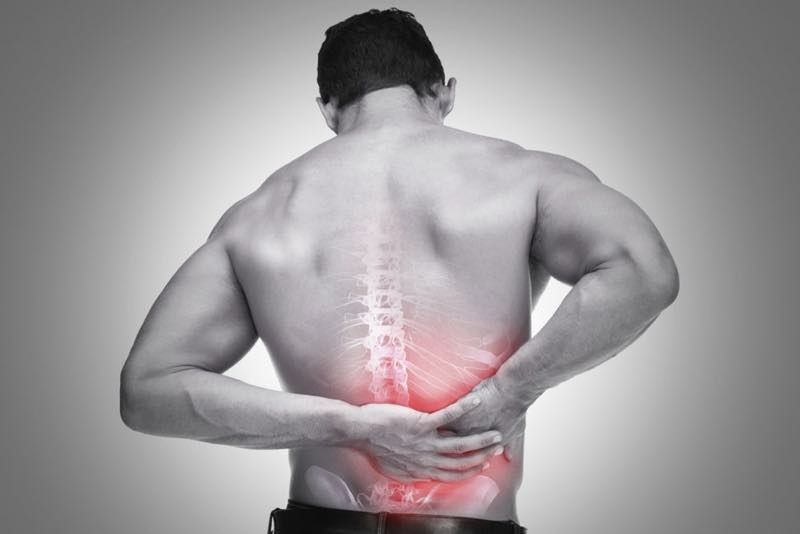
This makes the most used joints susceptible to degeneration. During rest our joints undergo a significant amount of repair, but repeated strain over time eventually takes it toll and we experience more frequent episodes of pain (the 'flare'). Back pain associated with osteoarthritis can be effectively managed by lifestyle modifications, diet, specific exercises, supplements, manipulation, low level laser therapy (LLLT) and massaqe.
Pregnancy
If you are pregnant, you may well be experiencing low back pain. It's estimated that more than 1 in 2 women suffer from back pain during their pregnancy, usually between the 5th and 7th month. You would typically feel the pain increase as you sit or stand for a longer period of time. Back pain in pregnancy is due to the increased biomechanical strain on the muscles, ligaments and joints of the back and pelvis. The hormone relaxin peaks at the twelfth week of pregnancy and results in the remodelling of connective tissue and softening of ligaments. This is a normal response to your body adapting to your growing baby and preparing for birth. But this softening can result in excessive ligamentous strain - resulting in low back pain. Your posture changes significantly over the nine months and this affects how you walk and move - often resulting in increased low back pain.
Chiropractic care during pregnancy addresses the increased muscle and joint strain in a gentle and effective manner. A specific exercise program forms an essential part of our pregnancy care program. Back pain during labour can be very distressing. We help you take care of your spine during pregnancy which allows you to experience the miracle of birth in optimal health - fit and pain-free
